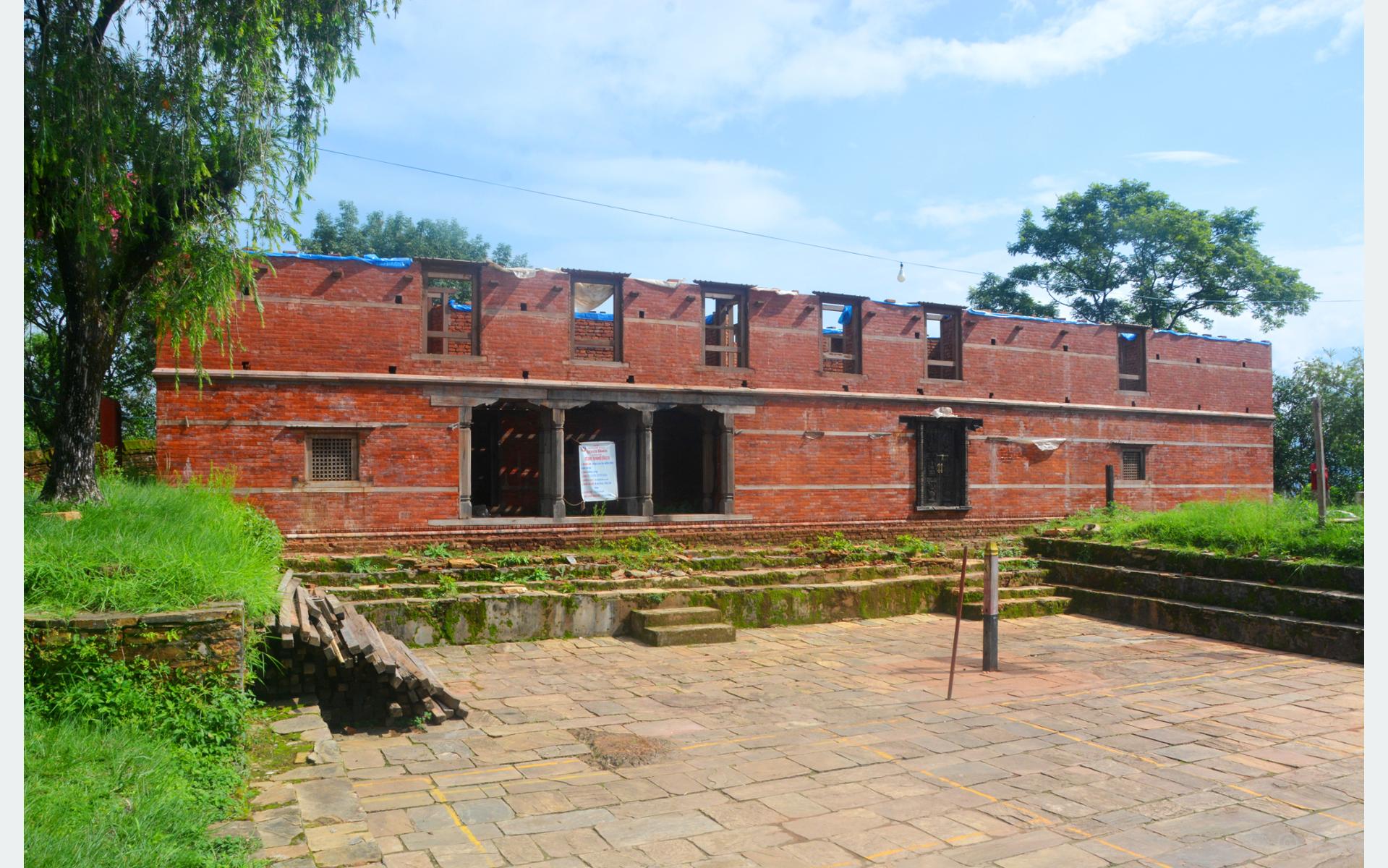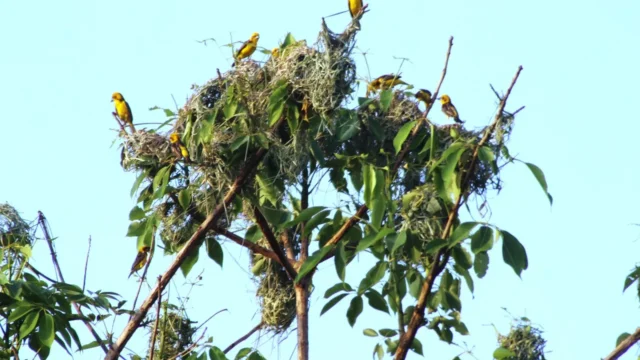Lamjung Palace, dating back to the 16th century during the Chaubise Rajya era, is currently undergoing reconstruction. The Department of Archaeology began the restoration project two years ago after the palace fell into disrepair. According to department engineer Govinda Adhikari, about 70% of the physical reconstruction has been completed.
“If there is no shortage of resources, the goal is to complete the work by the next fiscal year,” said Adhikari. “Due to budget constraints this year, the progress was slower than anticipated.” Initially, the government allocated NPR 13.3 million for the project, but only NPR 5 million was allocated for the current fiscal year. The first year’s work was undertaken by Bhaktapur’s NPS Construction Company, and this year Bhaktapur’s RGS/Vishnu JV has taken over the responsibility.
Adhikari noted that the reconstruction is being done in the traditional style and structure. Alongside the palace, the historic Kalika Temple is also being reconstructed. The palace will be a three-story structure with a traditional bungalow roof, while the temple will be built in the pagoda style. Construction materials such as bricks, wood, and surkhi are being sourced from Bhaktapur.
“The reconstruction is being done to reflect the traditional architecture, which makes the materials expensive and the work labor-intensive and time-consuming,” Adhikari said. “The second-floor walls and window and door installations are already completed.”
The Department of Archaeology is leading the reconstruction effort as part of the palace’s preservation plan. Rajendra Bohora, chairperson of the Gaunsahar Kalika Temple Conservation and Management Committee, expressed concerns about the project’s slow progress due to limited budget allocation.
“Compared to last year, the budget has been further reduced this year. If sufficient funds are not provided, the palace reconstruction might not be completed next year either,” Bohora said. “Although the Department of Archaeology is handling the reconstruction, there is uncertainty about which government body will manage the Lamjung Palace, which has resulted in this historic site being neglected.”
The palace, located in Gaunsahar, Besisahar Rural Municipality-3, has been identified as a site of historical and cultural significance, and local voices have been calling for its development as a heritage site. Bohora mentioned that the reconstruction of the palace, which had fallen into disrepair, has sparked new hope.
“If the reconstruction is completed quickly, the palace can be established as a tourist destination, enhancing Lamjung district’s identity both nationally and internationally,” Bohora added. Bhim Bahadur Gurung, a resident, reminisced about the palace’s past with its traditional tiled roof.
“The palace has been here since my ancestors’ time. Special worship ceremonies are held during Bada Dashain and Chaitra Dashain, attracting people from far and wide,” said the 70-year-old Gurung. “The old palace roof used to leak, but now that it is being rebuilt, we are happy.” The palace, built in 1550 by King Yashobrahma Shah, houses old cannons, swords, and spears.
A statue of King Yashobrahma, the first king of the Lamjung state, has also been erected within the palace grounds. Situated at an altitude of 1,445 meters above sea level, the palace is a 30-minute drive from the district headquarters, Besisahar. The palace covers an area of 16 ropanis, as informed by committee chairperson Bohora.
Historical Background of Lamjung Palace
The establishment of the Chaubise Rajya states began with the founding of the Kaski state in 1524 BS. According to Dr. Rajaram Subedi’s article “Lamjung Rajya,” King Kulamandan Shah of Kaski sent his second son Kalu Shah to establish the Lamjung state. However, Kalu Shah was killed by the Ghale King’s soldiers during his journey.
The article mentions that the Lamjung residents then requested Kaski’s King Kulamandan to send another prince. After initial reluctance, he sent his youngest son Yashobrahma to become the king of Lamjung. Yashobrahma ascended the throne on 15 Ashadh 1550 BS. After his death, his eldest son Narahari Shah became the king in 1598 BS, followed by nine successive rulers, including Chuda Shah, Achit Shah, Narendra Shah, Kehri Narayan Shah, Bhim Shah, Ripumardan Shah, and Bimardan Shah, until 1839 BS.
Before the Shah dynasty, the Ghale kings ruled the Lamjung region, which was under the Licchavi rule in ancient times. King Prithvi Narayan Shah started the unification campaign of the Baise and Chaubise states to create a unified Nepal. In 1839 BS, during the reign of Prithvi Narayan Shah’s daughter-in-law, Rajendra Laxmi Shah, Lamjung was incorporated into the state of Nepal, according to historians.





